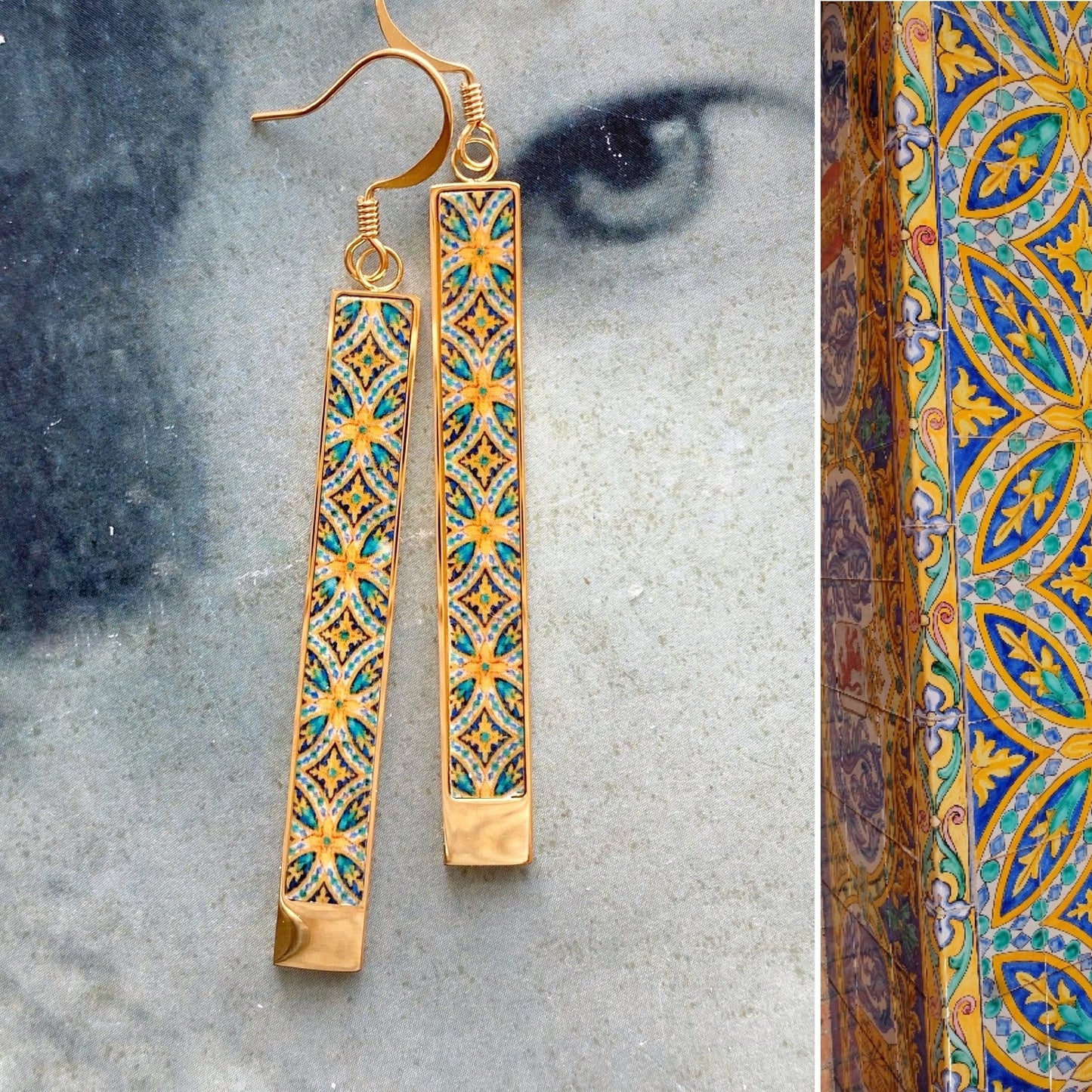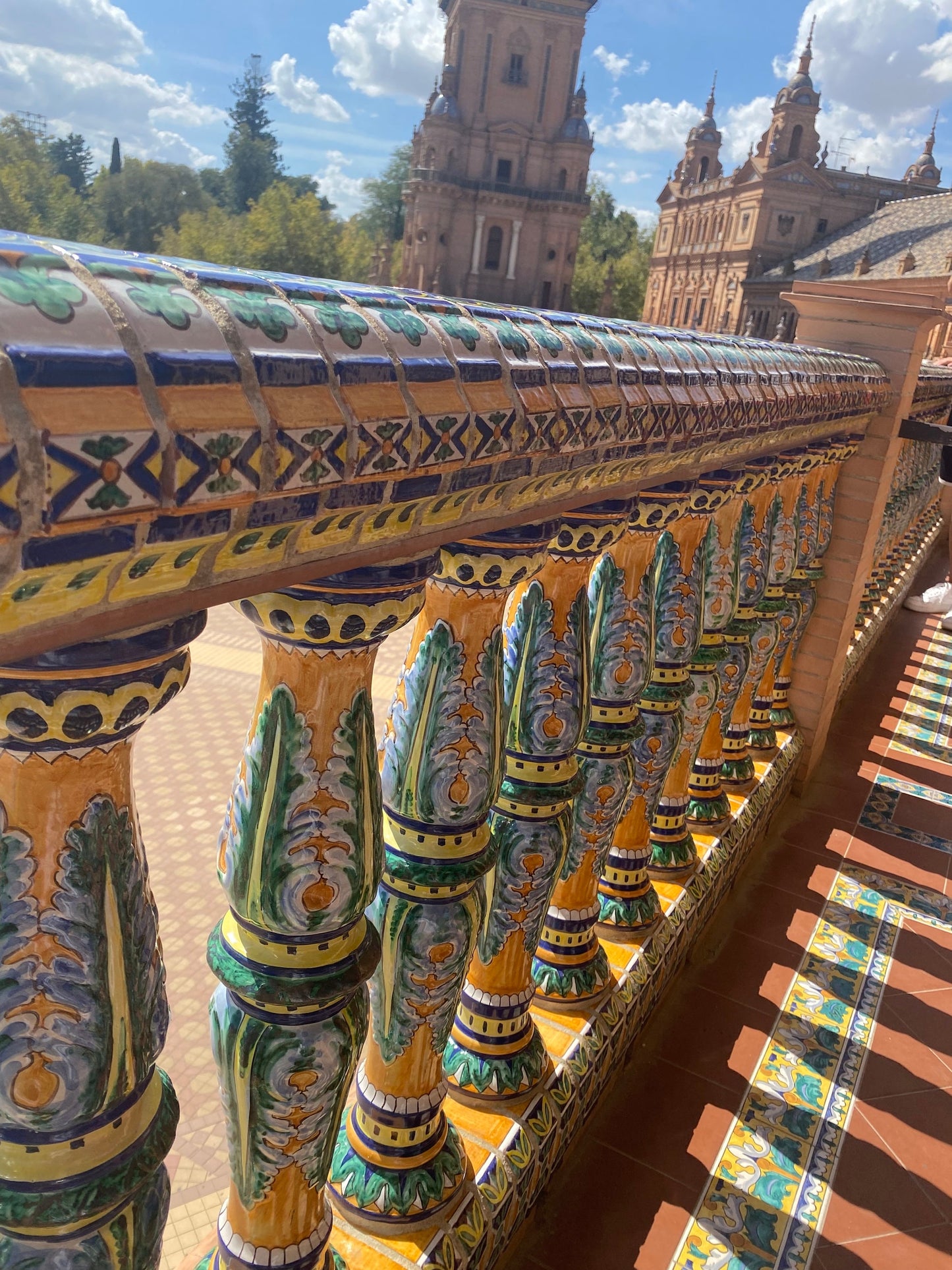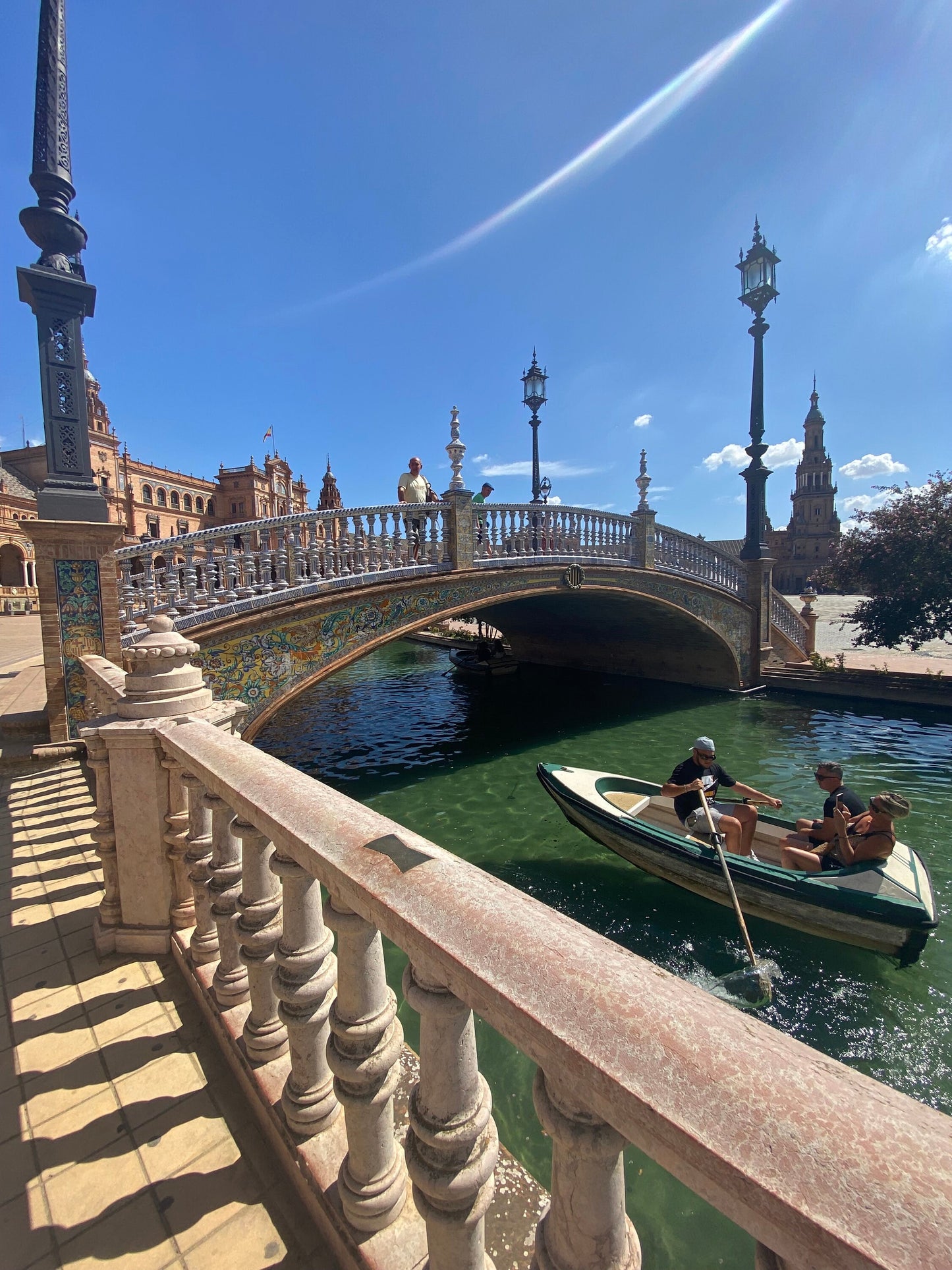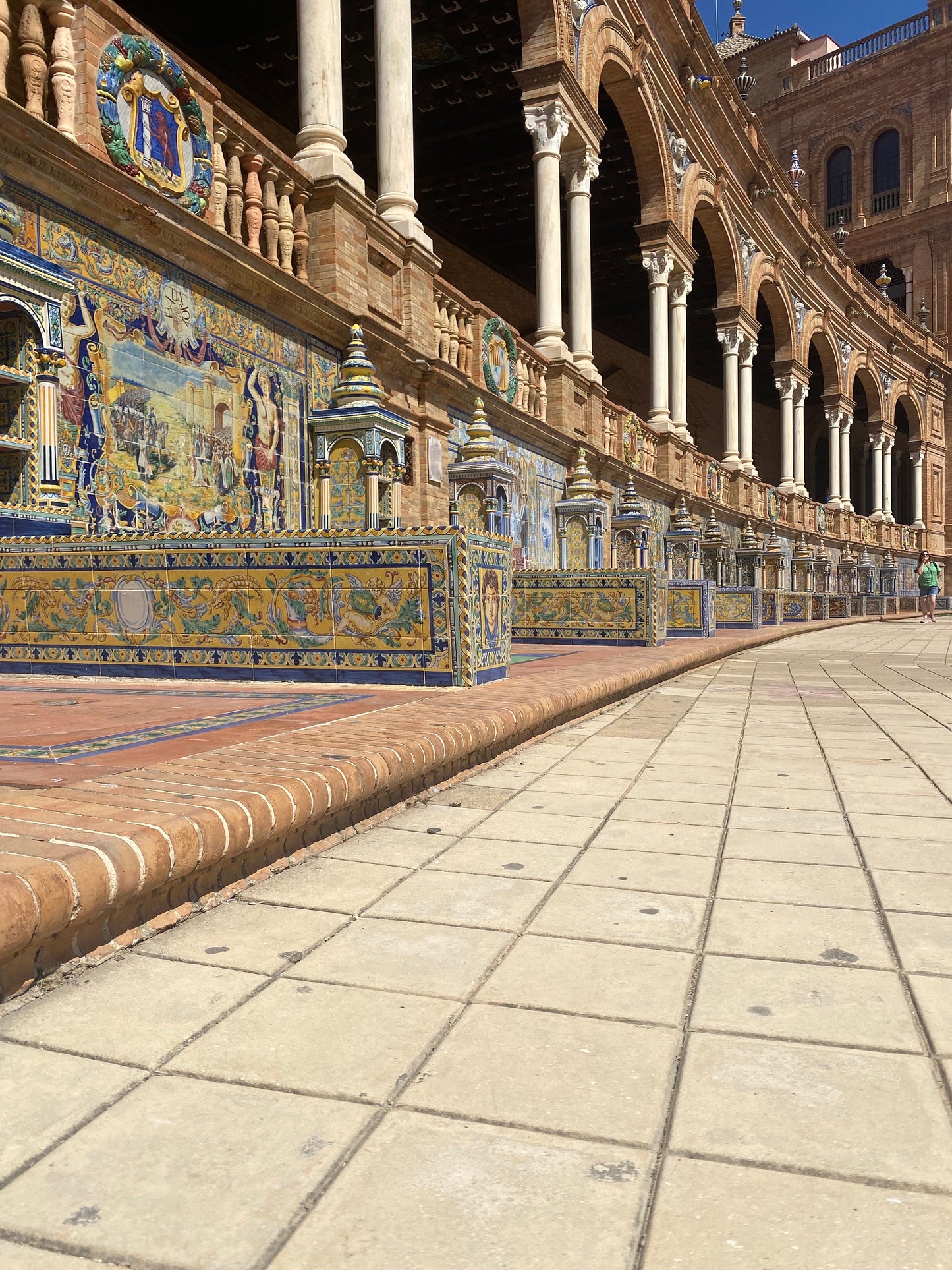My Store
Spanish Tile Earrings Spain Earrings Plaza de Espana Seville Tile earrings Atrio Tiles Boho Atrio Tile ethnic Earrings Green Brown
Spanish Tile Earrings Spain Earrings Plaza de Espana Seville Tile earrings Atrio Tiles Boho Atrio Tile ethnic Earrings Green Brown
Couldn't load pickup availability
Use this link to find all of our Spanish Tile pieces: https://www.etsy.com/shop/Atrio?section_id=49450379
These beautiful Bar or Matchstick Earrings are reversible and measure 2.5" long. They are solid stainless steel, but very lightweight. Precious pieces of Italian history you are certain to receive compliments on! Since they come in a gift box, they make perfect gifts for the women in your life.
QUESTION: Are your tiles real antique Spanish tiles?
ANSWER: Absolutely not. In our description of each item, we try to call attention to the theft and destruction of antique tiles. Even the tiles found in flea markets and antique stores were most likely stolen off a building during the night. We have seen entire home facades disappear during the night to thieves.
For this reason, we have no part in this despicable crime. We make our own tiles from polymer clay. Ceramic would be far too heavy for earrings and impossible to mold into the shapes we want. For the hoops, we mold the clay as thin as we can get it, so that it will look pretty inside the hoops.
These lovely tiles are found in the Plaza de Espana in Seville Spain.
According to Wikipedia:
The Plaza de España ("Spain Square", in English) is a plaza in the Parque de María Luisa (Maria Luisa Park), in Seville, Spain. It was built in 1928 for the Ibero-American Exposition of 1929. It is a landmark example of Regionalism Architecture, mixing elements of the Baroque Revival, Renaissance Revival and Moorish Revival (Neo-Mudéjar) styles of Spanish architecture.[1]
The Plaza de España, designed by Aníbal González, was a principal building built on the Maria Luisa Park's edge to showcase Spain's industry and technology exhibits. González combined a mix of 1920s Art Deco and Spanish Renaissance Revival, Spanish Baroque Revival and Neo-Mudéjar styles. The Plaza de España complex is a huge half-circle; the buildings are accessible by four bridges over the moat, which represent the ancient kingdoms of Spain. In the centre is the Vicente Traver fountain.
Many tiled alcoves were built around the plaza, each representing a different province of Spain.[3] The Plaza's tiled Alcoves of the Provinces are frequent backdrops for visitors' portrait photographs, taken in their own home province. Each alcove is flanked by a pair of covered bookshelves, now used by visitors in the manner of a "Little Free Library". Each bookshelf often contains works with information about their province. Visitors have also donated favorite novels and other books for others to read.
The Plaza de España has been used as a filming location, including scenes for Lawrence of Arabia (1962). The building was used as a location in the Star Wars movie series Star Wars: Episode II – Attack of the Clones (2002) — in which it featured in exterior shots of the City of Theed on the Planet Naboo.[4] It also featured in the 2012 film The Dictator. The 2023 Netflix series, Kaos, will also feature scenes filmed at the Plaza. [5]
The term Azulejo or Tile dates back to the time of Arab occupation of the Iberian Peninsula. The term "azulejo is derived from the Arab word (al zulej) which means a smooth and polished stone. It wasn't until the 16th century that the process was perfected into the tile we know today.
Wear a Piece of History!
🌺 CLICK here to return to my shop:
https://www.etsy.com/shop/Atrio
🌸 Favorite our shop for updates
🌿 Follow us on Instagram @atrio_azulejos
🌿Follow us on Facebook https://www.facebook.com/o.Atrio/
+All items will come in a gift box ready for gift giving.
🌺ATTENTION: There is a 5% RESTOCKING fee per item PLUS a $3.50 fee for returned items.
🌸🌸🌸🌸🌸🌸🌸🌸🌸🌸🌸🌸🌸🌸🌸🌸🌸🌸
🌸
The term Azulejo or Tile dates back to the time of Arab occupation of the Iberian Peninsula. The term "azulejo is derived from the Arab word (al zulej) which means a smooth and polished stone. It wasn't until the 16th century that the process was perfected into the tile we know today.
🌸🌸🌸🌸🌸🌸
+ Please note that some of our items will come with a tag stating "Return only accepted if tag is attached". There are no exceptions to this policy.
🌸🌸
Although the tiles are water resistant, care should be taken to keep the tiles and metal out of water and away from lotions, including cosmetics, sunscreen, hairspray, etc. The chemicals in these products will dull the finish on the tiles.
🌸🌸🌸
All my tiles are replicas made of polymer clay where the image actually becomes part of the clay through baking. No glue is used in the process. The pieces become waterproof and scratch resistant. Due to the handmade and hand shaped nature of each tile, slight variations will occur, as no two pieces are alike.
🌸🌸🌸🌸
Wear a Piece of History!
Share










